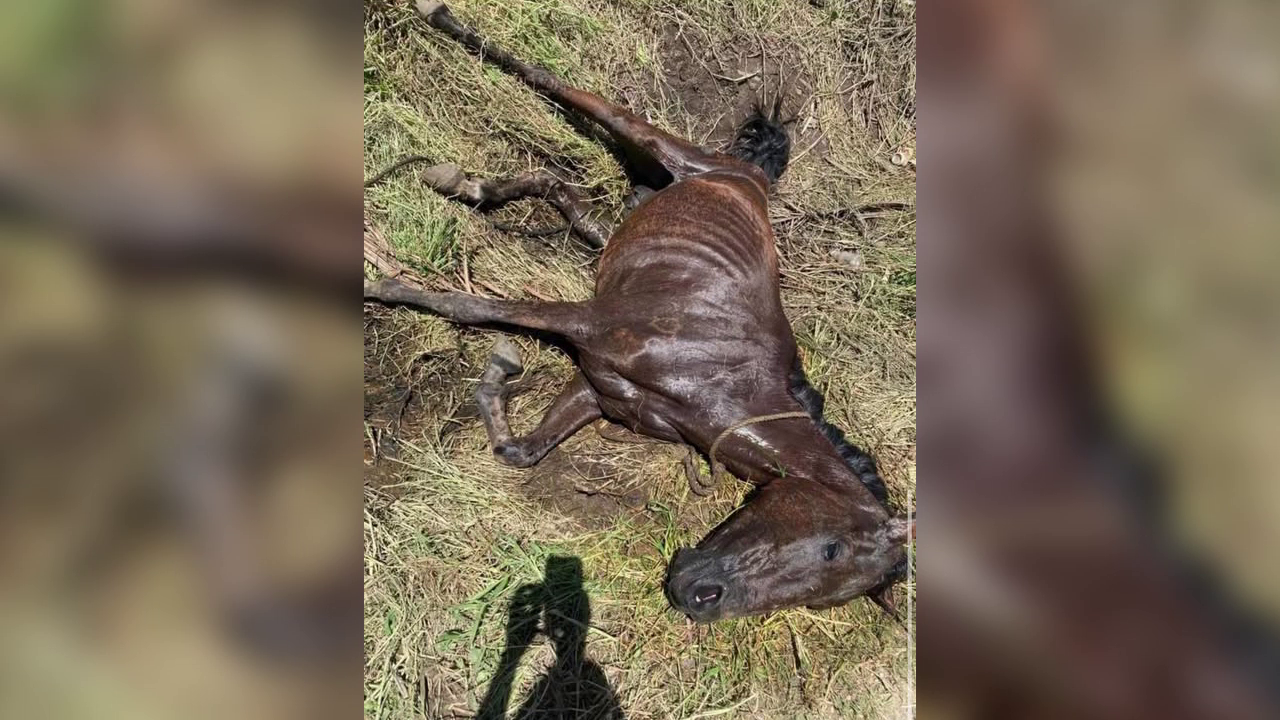This next story doesn’t often make the news, but this week, it sparked enough outrage for people to demand action from the authorities. It started when a horse was found injured and starving in a drain, left to die. After a Facebook post about the animal went up on Wednesday, many Belize City residents called for stricter enforcement of animal cruelty and neglect laws. Since then, more reports have surfaced of horses being left tied in the sun for hours without food or water. Rescuers try to help but prefer to stay anonymous due to fear of being targeted. News Five’s Marion Ali spoke with two of them today and filed this report.
Marion Ali, Reporting
This heartbreaking picture of a horse left to die from injury and starvation in a Belize City drain has outraged many people, sparking a call for justice against those responsible. An animal rescuer we spoke with was furious when she found the horse, especially given the many stories of horses being abused by youths.
“Wednesday afternoon, I was leaving my mom residence right around Benbow Street in the city and a vehicle blocked traffic. So, I was wondering what happened. So, I said, let me go and see when I looked, a horse was dead in the bush – in the drain, and I just lost it. I completely lost it. I lost it because I couldn’t believe that you always hear stories about kids riding the horses. You see them riding the horses. People complain on Facebook multiple times and like nothing is being done.”
But there’s hope. In this case, the animal rescuer called a police officer, who quickly sent a patrol to investigate. The Belize City Council also sent a dump truck to remove the carcass. Unfortunately, this was just one incident. The rescuer mentioned that there were three more cases of horse abuse and neglect the next day.
“Thursday, which was yesterday, I got a call again on pictures from three different locations. One was in front of the education building. The other was at the corner of Cairo Street and Euphrates Avenue. And the other one was, I think, somewhere by Cemetery Road where horses are tied with no water.”
In another instance, a man found a horse tied to a lamp post in the scorching sun and took it upon himself to move the animal to a cooler spot under a tree. Another animal rescuer mentioned that abuse and neglect are so widespread in Belize that dogs are often the most common victims. She recounted a recent incident where a fellow rescuer was criticized for helping an abandoned dog.
“We had a situation where one of my volunteers kept passing this house and kept seeing this little poodle tied on a very very short leash, no shelter, no food, no water. She realized that she didn’t see any activity in the house so she started going in and feeding the poodle and give it water. Ih do that fi a week – still nobody in the house. She took the poodle out of the sun where it was suffering, no activity in the house, so she figured they just abandoned the poodle. She took the poodle home and the owner showed up about another week and a half later, and the blasted her on Facebook, and accused her of stealing ih dog.”
There are only a few animal rescuers in Belize, and they’re overwhelmed trying to balance work and rescues. They do it out of love for animals. They advise pet owners to take good care of their pets or not get one at all.
“It’s just common sense. You know Belize, it’s hot. If we walk outside the street, outside it is hot, extremely hot. Simple thing as water – they just so simple water they could give the animal, put them in a shaded area. Many times, even with dogs, you pass on certain areas, even in the yard, fence yard at that too, they have a dog tied to a tree with no shelter, no house. Rain beat them, sun beat them. And like it’s just the basic norm, and that’s my issue. It is not normal because they have feelings just like any other animal. And just like us, just get a house and if you can’t afford to have an animal, just don’t have one.”
We’ll follow up with a story about the laws on animal abuse and neglect, and the penalties people can face if they’re convicted of these offenses. Marion Ali for News Five.
